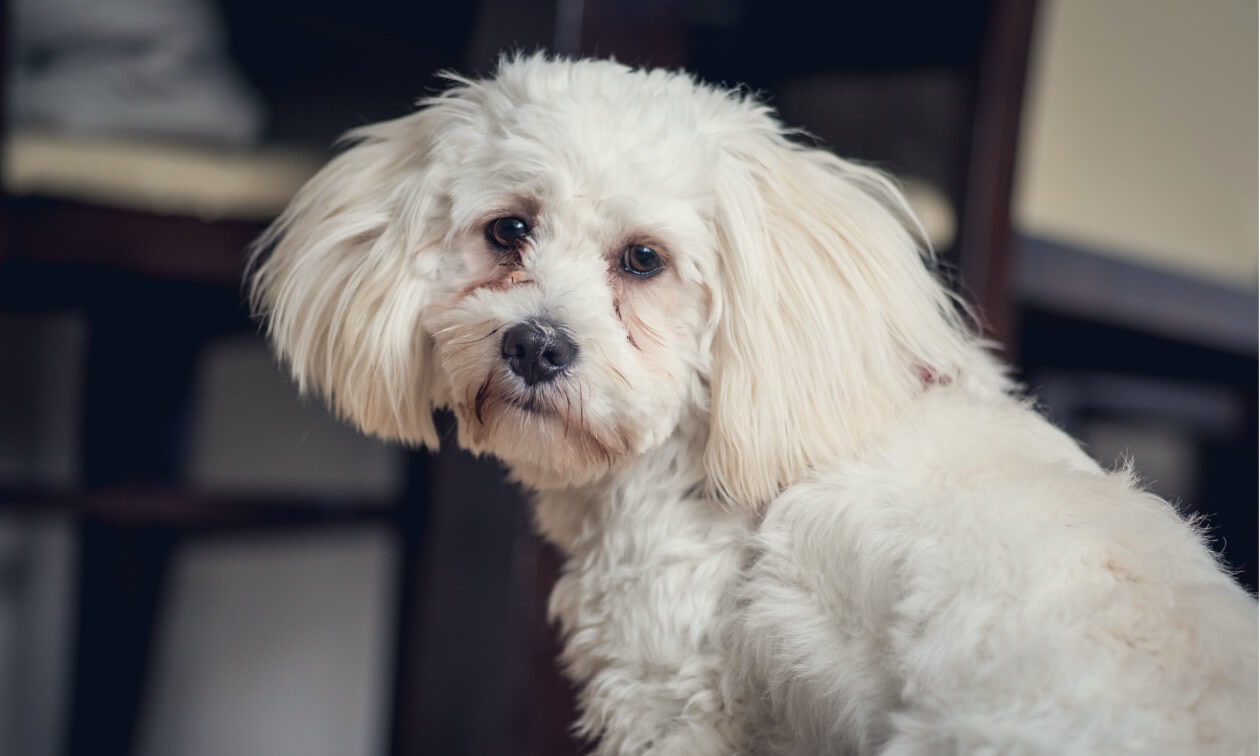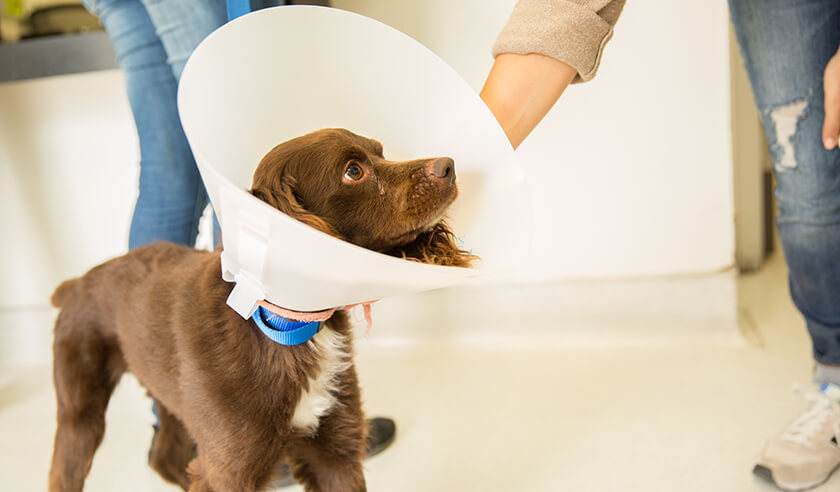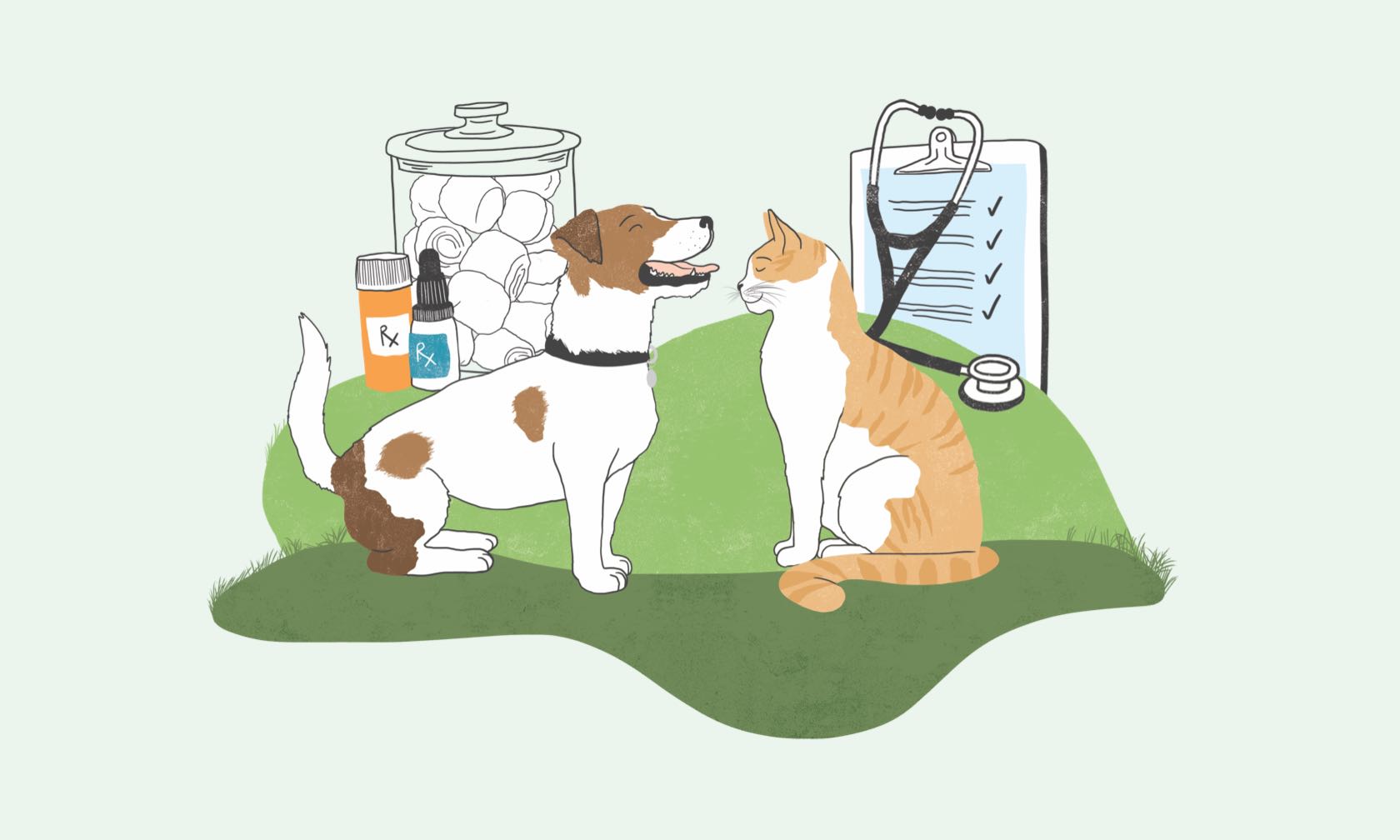Gazing softly into our dog’s eyes is one way we bond and connect with them. But that bond can be interrupted when we get distracted by those reddish-brown stains in the corners of their eyes. Read on to see what steps you can take to prevent and clean your dog’s tear stains.
What Are Dog Tear Stains?
When you see tears coming from your dog’s eyes, they aren’t crying. It’s actually epiphora — an overproduction of tears or tears that can’t properly drain through the tear ducts. This is not a specific disease but rather a symptom of various other conditions.
When red blood cells are broken down by the body, iron-containing particles are produced called porphyrin. Tears, as well as saliva, feces, and urine, contain this porphyrin which has a reddish-brown pigment.
Some dogs may have more porphyrin than others, resulting in mild to significant staining of the fur at the corners of the eyes. These stains can seem even darker when yeast infections result from the constant moisture.
How to Clean Dog Tear Stains
- Always keep the fur around your dog’s eyes and nose as short as possible. This makes it easier to clean, and shorter fur can’t get as “gunky” or matted from tear stains.
- Frequently wipe your dog’s face using a warm washcloth and, if needed, a vet-approved dog face wash.
- After washing, it’s very important to dry the areas you have cleaned — especially between any facial folds. You don’t want yeast infections to develop, so keeping your dog’s face clean and dry is essential!
The only way to stop tear stains entirely is to address the underlying cause of your dog’s excessive tearing (if possible). There are grooming products on the market that claim to get rid of the actual stains, as well as DIY home remedies. Some products are harmful to your dog’s eyes (for example, any that contain hydrogen peroxide can cause significant trauma if they get in the eye). Always consult your veterinarian before trying any commercial or DIY remedy.
Ask your veterinarian about grooming wipes to gently clean the corner and under your dog’s eyes. There are also facial cleansers made specifically for dogs that are gentle or “tearless,” making them easier to use near your dog’s eyes.
Preventing Your Dog’s Tear Stains
In addition to managing your dog’s tear stains with proper grooming, they may also benefit from the following preventative tips:
- Probiotics
Probiotics sometimes seem to lessen tear-staining. This is thought to be due to positive effects on the dog’s immune system. - Water
Give your dog bottled spring or filtered water instead of tap water. Tap water can be high in minerals that cause more staining. Do not use distilled water. - Diet
Be sure to feed your dog a high-quality, well-balanced diet. Talk to your veterinarian to determine if dietary allergies might be a factor. - Food/Water Bowls
Use stainless steel bowls. Some dogs can develop allergies to plastic bowls, and plastic can be more likely to harbor bacteria. Be sure to clean the bowls regularly. - Clean Air
Use air purifiers for dogs with allergies. Air pollutants and other environmental allergens can irritate your dog’s eyes and skin.
Why Your Dog May Have Excessive Tearing
The presence of porphyrin in tears causes the staining, but what factors cause more tears in some dogs than others?
Insufficient drainage of the tear film from the eye is the most common cause of excessive tearing. This is often the result of a blocked tear duct or a deformity that has resulted in poor eyelid function. Excessive tears can also be the result of overproduction. However, not all dogs with tear staining have excessive tears.
Many of the causes are minor and often nothing to be concerned about — for example, the fur around your dog’s eyes is too long or they have minor seasonal allergies. If you notice that the tearing and staining are worsening, it’s best to have your dog evaluated by your veterinarian to check for health issues that may require specific treatment.
Tear staining in dogs can occur due to the following medical conditions:
- Ingrown eyelashes
- Entropion (a condition where the eyelid folds inward, causing skin and lashes to rub on the eyeball)
- Narrow tear ducts or tiny tear duct openings
- Tear-producing gland abnormalities
- Glaucoma
- Teething in puppies
- Allergies (environmental and/or food)
- Stress
- Poor diet
- Exposure to smoke or other environmental irritants
- Trauma
- Medications
Dogs That Are Prone to Excessive Tearing and Tear Stains
Dogs that fall within one or more of these categories are prone to tear staining:
- Brachycephalic or Flat-Faced Dogs
These dogs tend to have shallow eye sockets and bulging eyes, which makes it difficult for them to fully close their eyelids. The result is a constant irritation to the eye and tearing. Additionally, many of these dogs also have crooked or narrowed tear ducts. This prevents normal drainage of excess tears, causing them to spill onto the face. - Breeds Susceptible to Congenital Tear Duct Abnormalities
Some breeds can be born with underdeveloped tear ducts in one or both eyes. This abnormality can be missed in dogs with darker coats. - Dogs with Long Facial Hair
When long hair around the eyes isn’t properly and regularly groomed, the dog’s eyes water. And coarse hair often grows inwards and creates additional irritation. - Dogs with White Coats
The reddish-brown pigment shows up well on white. Tear stains will be present on almost any white or light-colored coat. - Breeds Prone to Allergies
Allergies can be associated with eye irritation and, therefore, increased tear production.
By understanding the factors that can contribute to dog tear staining, you can determine the best preventative steps for your dog, and use these safe methods for how to clean dog tear stains.
ZPC-02226





